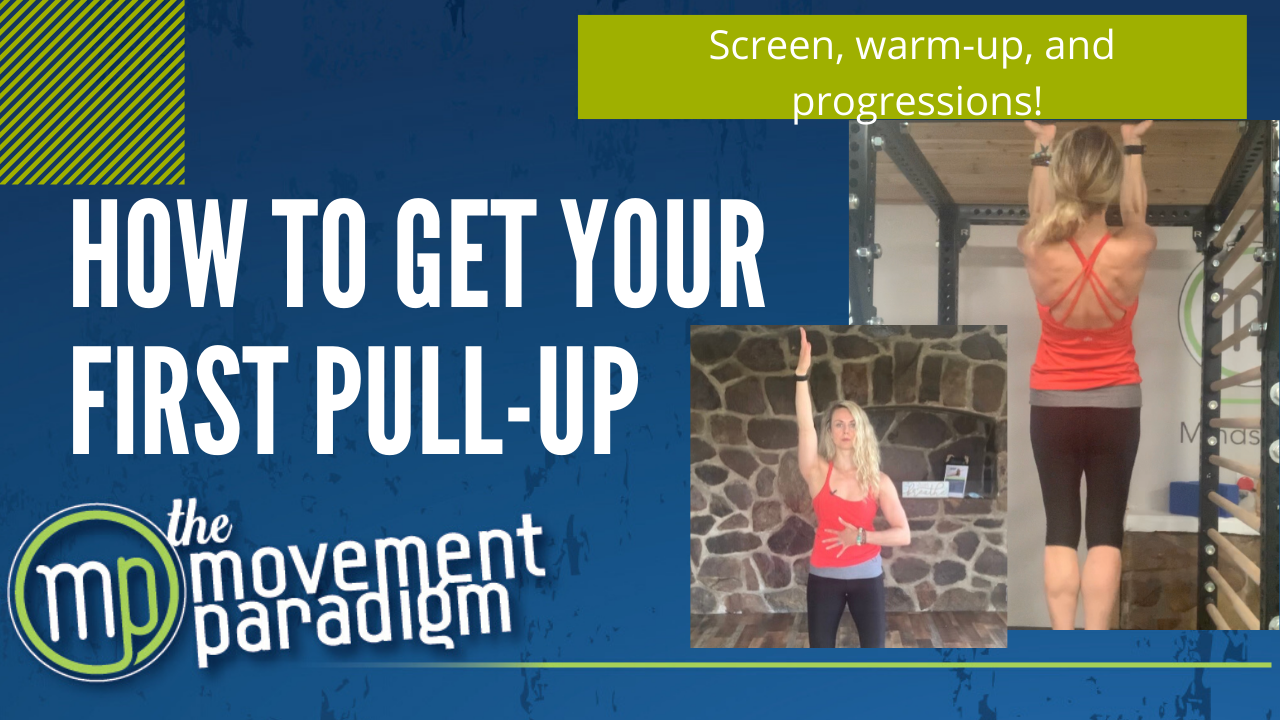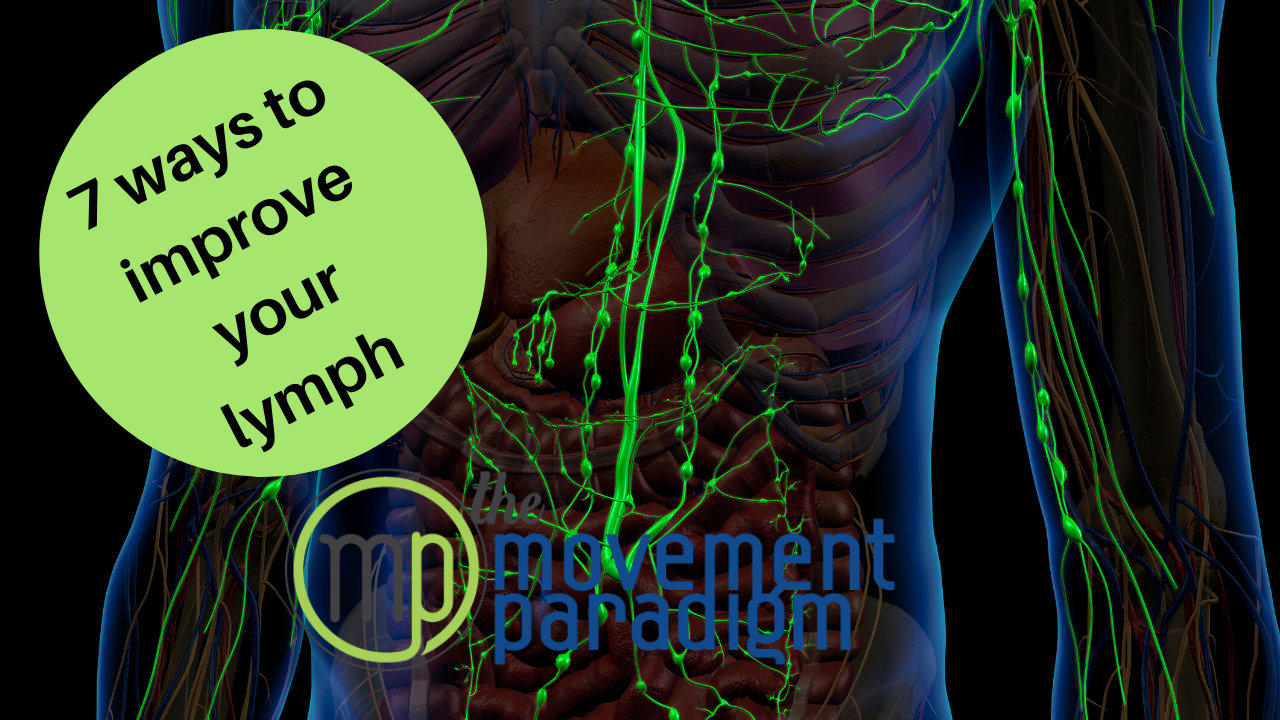Have you convinced yourself that you’ll never be able to do a pull-up, or you’ve tried with bands and assistance, but you’ve been unsuccessful? With the right exercises, time, patience, dedication, and hard work, you can absolutely do a pull-up. Whether you’re a child, an adult, a man, or a woman, it doesn’t matter. You have the potential inside of you to do a pull-up.
Pull-ups are one of the greatest human fundamental strength movements that we all can do. However, before you work on pull-up progressions, you do want to make sure that you have checked a few boxes. So, here are the boxes you need to check.
1) Do you have good shoulder and scapular mobility?
To test this, see if you can get your arm completely overhead so that it is in line with your ear without pain or discomfort. If you can great, move on to the next box. If you can’t, that is what you want to start to work on first.
2) Do you have proper breathing mechanics?
To test this, see if you can breathe through your diaphragm as you inhale. This means having 360 degrees of intra-abdominal pressure. When you inhale, your abdomen will expand like when filling a balloon. Then, as you exhale, you’re creating this abdominal tension as your ribs descend towards your hips and you’re actively pulling your belly button in towards the spine, thinking of it as a corset. If you are still breathing from your neck and shoulders, it will make it very challenging to do a pull-up successfully.
3) Are you able to hold a hollow plank?
Are you able to control your body weight in a closed chain position (hands connected to the floor) while breathing and creating optimal tension throughout the body? Can you be strong, but relaxed?
Once you check those boxes, now you want to make sure that you’re prepared for the pull-up. So, let’s start with shoulder CARS (controlled articular rotations). For shoulder CARS, you’ll want to have good tension through the ground, feet strongly connected and rooted in, and ribcage down. From here, starting with your right arm, taking a breath in, slowly bring your arm up, ribs coming down. When your arm is overhead, will first externally rotate, and then internally rotate keeping your arm as close to your body as you can, without losing this position. Perform this next to the wall to maximize the effectiveness. The goal is to create this total-body tension to create active control of the shoulder. This will make sure your shoulders are prepped. Repeat for five in each direction.
Next, you can do the bear walk to make sure that you’re working on good scapular and shoulder control before pull-up progressions. Watch the video here to see how to perform this. Now, let’s get it to the five pull-up progressions you should do before completing a full pull-up.
5 Pull-Up Progressions You Should Do Before Completing A Full Pull-Up
Pull-up progression 1: Dead Hang
For the dead hang make sure that your hands are in line with your shoulders when hanging from the bar, you’re in a slight hollow position maintaining your breath, and your arms are in line with your ears. Aim to hold this for at least 30 seconds to a minute before going to the next progression.
Pull-up progression 2: Pull-up Prep
This is a very key part of the pull-up. You want to maintain the same hanging position, and then lower your shoulder blades, and then raise them back up slowly with control. You want to make sure you are maintaining the same alignment the whole time with your head in between your arms. Repeat this for as many reps as you can with high quality.
Pull-up progression 3: Isometric Hold
For the isometric hold, you’ll want to jump into the position by standing on something where you can reach the bar from. Once you grab onto the bar, pull yourself up using an underhand grip so your head is over the bar. (This grip is recommended to start before progressing to an overhand grip). You want to make sure you’re pulling the elbows down towards the ground maintaining that slight hollow position with a neutral head position you’re while breathing and head. Hold this position for 30 seconds to a minute.
Pull-up progression 4: Eccentrics
To work on strength, perform eccentric pull-ups. To do this slowly lower all the way to the bottom of the motion completely finishing it, and then returning to the top by standing on your block, so you can grab the bar again. You’re avoiding the concentric portion and just focusing on the eccentric portion. Make sure to maintain your hollow position, breathe, and keeping nice control. Repeat for as many reps as possible with control. Progress to five sets of five for three to six weeks.
Pull-up progression 5: Bringing It All Together
Now you’ll begin to put these together, starting with an isometric hold into your eccentric, and then a pull-up prep.
Now you’re ready to perform the full pull-up! Finish the motion completely and finish with the pull-up prep at the bottom.
This may take you weeks to months depending on your level of fitness. Make sure to master the progressions before moving on.
Pull-ups require patience, hard work, time, and dedication. However, I’m confident that you will be able to perform this movement while doing all of these progressions. Remember you still want to build overall strength, so make sure to incorporate other types of total body strength training to enhance your progressions and performance with this movement. A common question is “should I do assisted pull-ups with bands?” They are not recommended because they do not build the fundamental strength required for a pull-up. Please make sure to not take any shortcuts and work on the progressions.
Reach out for a 15-minute FREE discovery session to see how we can help you on your journey.
For more content, make sure to subscribe to our YouTube channel here.
Other things that may interest you:
Vagus Nerve Hack | Pelvic Floor Hack


